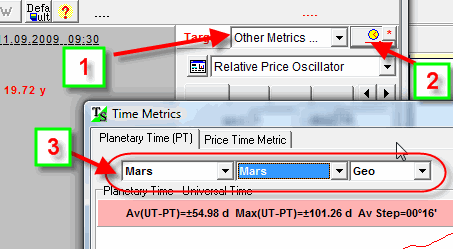
Planetary Waves
Here the planetary wave technology will be discussed. Before reading this article, I recommend to look at this one (there the planetary time idea is explained): http://www.timingsolution.com/TS/Articles/Time_Metric_1/planetary_time_1.htm.
Let's do some calculations together. Run "Spectrum" module and highlight "Other Metrics" option. Set there Mars-Mars geo metric this way:

Calculate this spectrogram; you should get something like this:
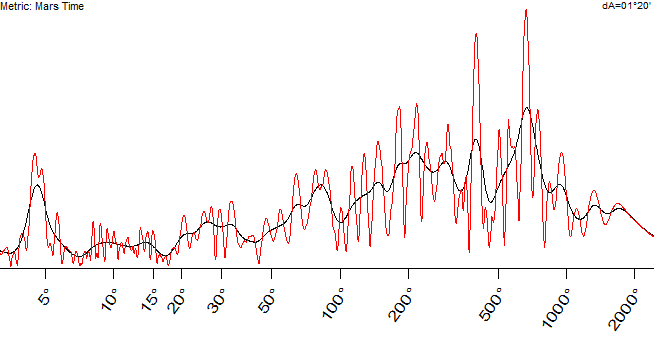
What is that? Instead of the time scale that we used to see in regular Spectrum, we see here degrees.
This module works exactly as regular Spectrum. The difference is that we use for TIME calculation not a standard clock, but the path that Mars passes.
In this example the strongest cycle is 664 degrees of Mars's path geocentric (the highest peak of spectrogram diagram):.
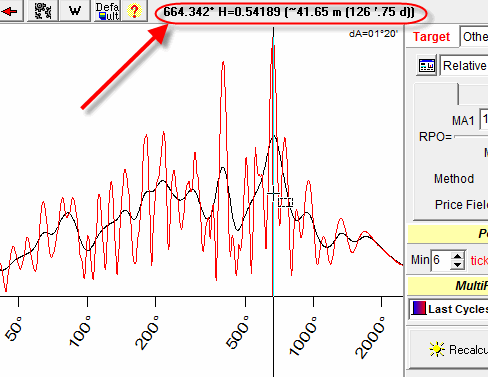
It means that for this particular financial instrument there is the cycle of 664 degrees of Mars's path, and this is the strongest cycle. Because Mars moves not evenly and sometimes becomes retrograde, this cycle looks differently than any classical harmonic cycle.
To see how this cycle works in time, follow these steps (set amount of overtones=1 to observe a pure cycle without overtones):
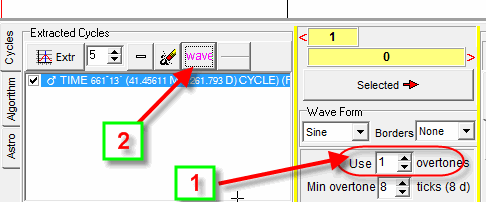
This is how this cycle works:
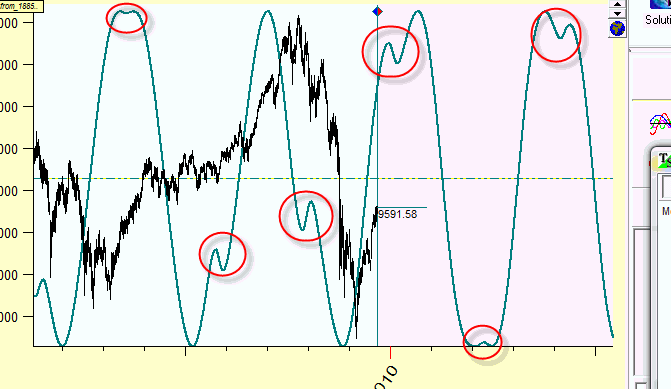
Because Mars moves retrograde sometimes, we have some irregularities in this wave (they are marked by red cycles).
This curve repeats itself each 664 degree, the non even Mars movement makes these patterns irregular in time.
You can pick up several cycles and calculate the projection line based on several Mars cycles:
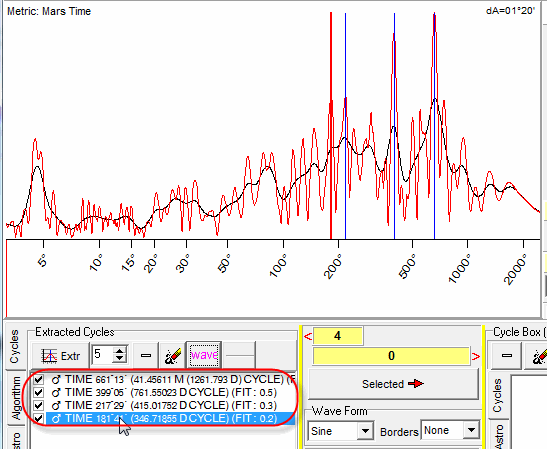
Here you can see the projection line based on four of these cycles together with these cycles (the teal line is the superposition of four cycles, and below are four cycles):
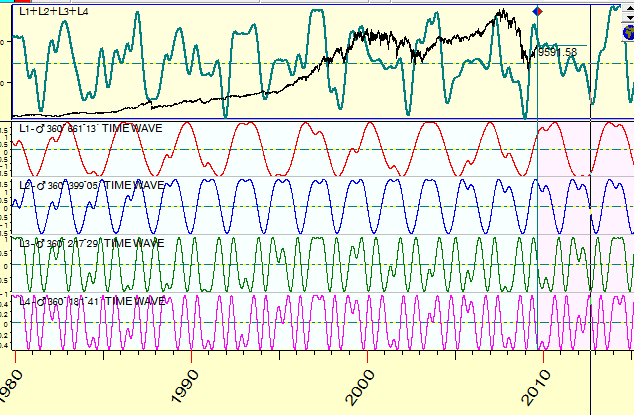
To understand the difference between regular cycles and planetary cycles, I have calculate the projection lines based on four strongest harmonic cycles:
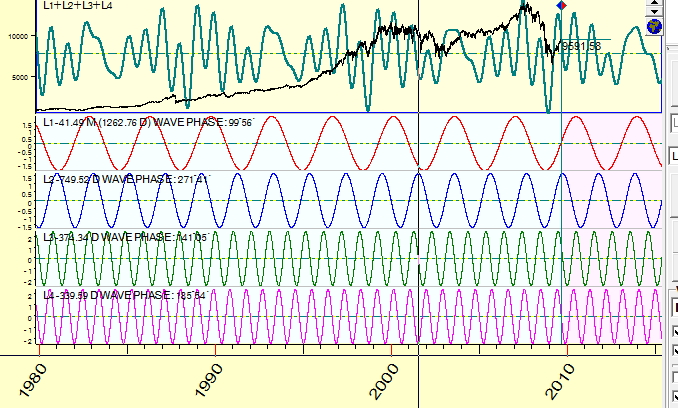
The difference is obvious.
Planetary cycles can be used for more advanced analysis. For example, you can put these cycles to the Clipboard and use them as inputs for the Neural Net. To do that, click this button:
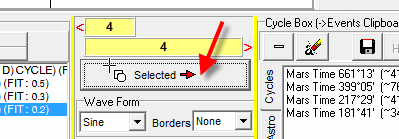
Another application of this approach is searching for the most powerful
harmonics. How does it work?
There is a possibility in Composite module to define harmonics manually:
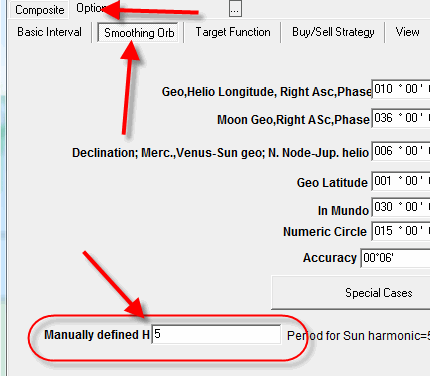
For example setting Harmonic=5 you analyze the planetary wave with the period
360/5=72 degrees.
The question is what harmonics are the most informative for some
particular instrument?
While you pick up the most powerful cycle (664 degrees in our example), the
program points the value of the harmonica (H=0.54189) for this cycle:

In other words, if we analyze Mars cycle, the most powerful harmonics is
0.54189 (for this particular instrument).
Actually this approach works exactly as creating a model based on dominant
cycles: http://www.timingsolution.com/TS/Study/E/4.htm
I think that this approach deserves your attention.